The shiny volcanic glass obsidian comes in many interesting forms–and has a long and rich history. From varied shapes and a range of colors to chemistry that allows obsidian to be traced back to the volcano where it originated, plus the wealth of artifacts that people have produced for tens of thousands of years, there are many fascinating facts about obsidian. My previous post describes how obsidian develops, and the innate appeal of shiny objects; you can find it here: Obsessed with Obsidian.
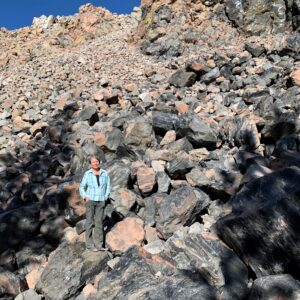
Wall of obsidian at Obsidian Dome, Owens Valley, California
A Variety of Colors
Varied chemistry, cooling histories, and degrees of oxidation of obsidian produce a range of colors. Iron gives the glass a black to dark brown color. Tiny particles of magnetite can impart an iridescent, rainbow-like sheen called fire obsidian. Small white crystals of cristobalite, a silica mineral, can produce a pattern named snowflake obsidian. Gas bubbles that become aligned as the molten material was flowing just before it cooled into glass can produce a golden sheen. Rare samples of obsidian are nearly colorless. Many years ago, I read about the existence of blue obsidian, and I’ve been searching for it ever since. I’d love to have a piece, or at least see some in a display, so my hunt continues.
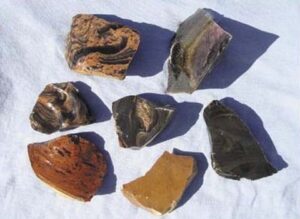
Obsidian from Glass Buttes, Oregon; obsidian types clockwise from upper right are rainbow, jet black, pumpkin, mahogany, gold sheen, and double flow; the center piece is also gold sheen (Wikipedia)
Glass Buttes in central Oregon produces many colorful varieties of obsidian. Well known to ancient people, archaeologists have found obsidian at sites from northern California to British Columbia, and as far east as Ohio. I haven’t visited Glass Buttes yet, but I would like to!
Blocks, Fibers, and Tears
From large blocks to thin fibers, obsidian can take many forms. Most obsidian occurs in massive blocks. In some regions, such as the Eastern Sierra region that I wrote about in my previous post, obsidian can be found mixed with pumice. This mixture develops from lava flows where differential compaction either closes gas bubbles, forming obsidian, or the gas bubbles remain to make low density, air-filled pumice.
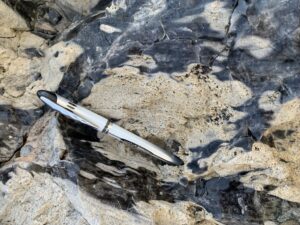
Mixed obsidian and pumice at Panum Crater
Fibers or thin strands of volcanic glass are known as Pele’s hair, named after Pele, the Hawaiian goddess of volcanoes. These form when molten lava explodes into the air and tiny droplets develop, which elongate into straight fibers as they fall back to the ground. Tear drop shapes called Pele’s tears can form along with the fibers. Pele’s hair is typically 2 to 10 inches (5 to 25 cm) long but can also be up to 2 m (6.5 feet). Basaltic lava, which generally has low amounts of silica and a high iron and magnesium content, typically produces Pele’s hair.
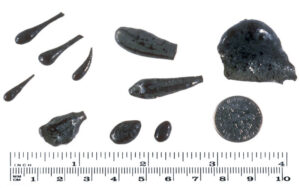
Assorted shapes of Pele’s tears collected a few kilometers downwind from Mauna Ulu Kilauea Volcano, Hawai`i. U.S. dime for scale (Wikipedia)
Apache tears are rounded dark pebbles of obsidian, usually of a rhyolite (high silica) composition. The pebbles can be up to about 2 inches (5 cm) in diameter. They originate as cores of fresh obsidian that are surrounded by a matrix of light-colored, hydrated rhyolitic material known as perlite. Differences in the cooling history and water content of lava control the formation of Apache tears. This form of obsidian is especially common in the Western US in Arizona and Nevada.
Unique Chemistry
Every volcanic eruption has a distinct chemical signature, based on the unique chemistry of the magma and the path it takes while ascending and erupting. Analysis of the trace elements in the obsidian allows researchers to determine the volcanic source of the glass. This is an extremely valuable tool for archaeologists, as studies of obsidian artifacts can provide information on ancient migration patterns and long-distance exchanges, and can detect differential access to raw material sources that may indicate political boundaries.
Ancient people used only four sources of obsidian in the Mediterranean, so they distributed this material widely.

Obsidian diffusion in the Mediterranean region circa 9,000 to 3,000 years before present; Giacimento/Deposit; Industria/Industry site (Wikipedia)
Ancient Artifacts
The value of obsidian for making sharp tools – not to mention the allure of the shiny surfaces – was recognized by humans far back in time. Obsidian artifacts made by Homo sapiens date back to more than 300,000 years ago, and for hundreds of thousands of years before then our ancestors also shaped this volcanic rock. From spear points and arrows to scrapers, mirrors, beads, and a variety of decorative objects, obsidian was an important natural resource for ancient people.
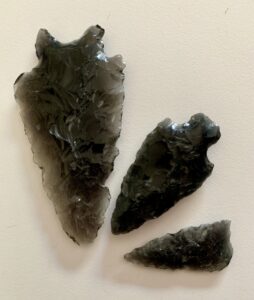
High-quality obsidian was a valuable trade item, and obsidian artifacts have been found many hundreds of miles from their original source. The conditions that create high-quality obsidian for tools are rare. Superior glass that is free of gas bubbles or small crystals is needed for tools. The material also must be of a relatively young age, as the glass becomes unstable over time and its favorable fracturing properties are lost.
More than 12,000 years ago the ancient Andeans were transporting and trading obsidian over long distances. High in the Andes Mountains, at the astonishingly remote elevations of around 14,500 feet (4,420 meters) above sea level (equivalent to the height of Mount Whitney, the tallest mountain in the United States outside of Alaska), cliffs of volcanic andesite contain alcoves that form ancient rock shelters. In these shelters archaeologists have found some of the highest altitude, most accurately dated Pleistocene settlement sites on Earth. The ancient Andeans who used the rock shelters collected and worked pieces of obsidian that were eroding from volcanic rocks on the mountain slopes.
Multiple radiocarbon age dates indicate people were using these shelters from as far back as 12,800 to 11,500 years ago. Ceilings covered with soot from fires, walls with rock art, and floor sediments with charred plant and animal materials reveal a long history of human occupation. Of the artifacts they left behind, among the most impressive are hundreds of projectile points, scrapers and other tools made from obsidian and fine-grained andesite. These were hunter-gatherer people who probably visited the rock shelters only seasonally. The annual average temperature in these mountains today is 37°F. It was probably a few degrees cooler 12,000 years ago, so this was a very cold and damp environment. Clearly, the value of the obsidian outweighed the difficulty of surviving in this high mountain environment.
Glass is unstable on geologic times scales, especially in the presence of water, and it slowly crystallizes. In 1960 USGS scientists introduced a hydration dating method for determining the age of obsidian artifacts, developed for archaeological sites in western North America. They based this method on the rate at which obsidian absorbs water when exposed to air. When it first cools, obsidian typically has less than 1% water present, but over time water diffuses into the glass. A narrow band or rind develops that scientists can measure by various techniques and calibrate to samples having known ages, such as by radiocarbon dating.
Today, surgeons use thin blades of obsidian in scalpels for precise surgery, such as in eyes, as these tools have a cutting edge many times sharper than high-quality steel surgical scalpels. This modern application is just the latest in the tens of thousands of years that useful items have been crafted to take advantage of the splendid properties of obsidian.
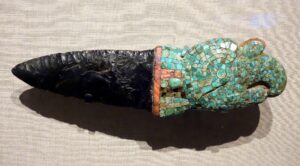
Ceremonial knife of obsidian, turquoise, and spondylus shell from Mexico, Mixtec culture, circa 1200-1500 CE. (Wikipedia)
Please share this post! Also, please scroll down to the bottom of this page and leave your email address on my website. You’ll receive messages only when I publish a new post (about once a week) and my occasional newsletter. Join now to learn more about geology, geography, culture, and history.
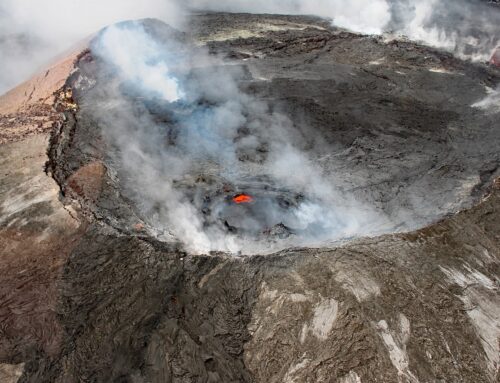
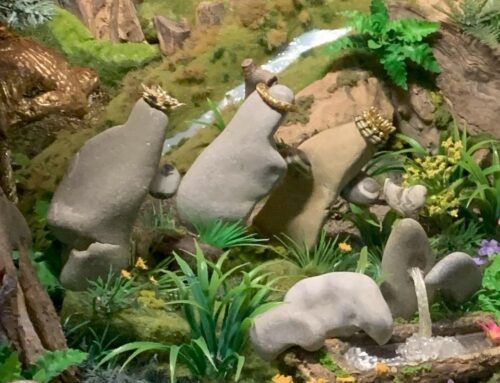

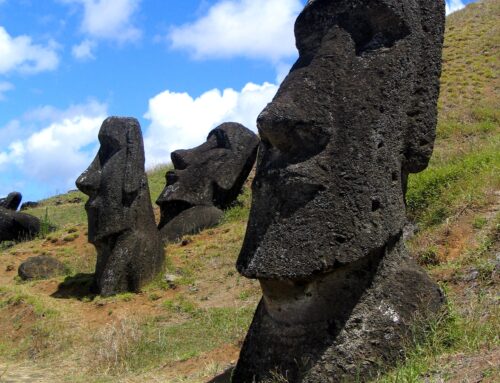

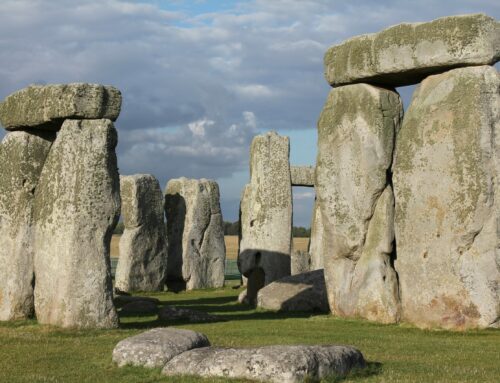
Fascinating!
Thanks, Paula!
Hydration dating? Modern use of obsidian in scalpels? Rainbow colored obsidian? I learned so much in this post. Really interesting. Thanks Roseanne.
Great — thanks for the comment!
Thanks, very interesting.
Good to hear — thanks, Kay!
This obsidian-blade knife is a genuine work of art. Also very intresting is the use of obsidian in scalpels.
Obsidian is an amazing material! Thanks for the comment, István!
amazing
Thanks!